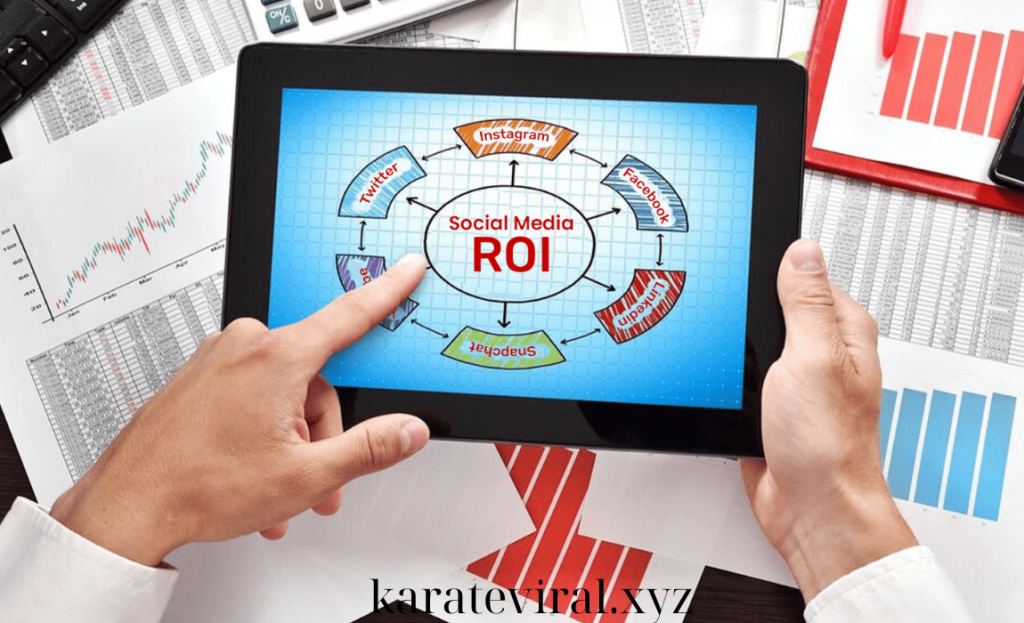Social Media Analytics & ROI
Tracking Social Media ROI: Measuring the Impact of Your Social Strategy
Social media has become an integral part of digital marketing, providing brands with a powerful platform to engage with audiences, build brand awareness, and drive conversions. However, understanding the effectiveness of your efforts requires tracking social media ROI—the return on investment generated from your social media activities. Measuring social media ROI helps businesses determine whether their campaigns are delivering the desired results, identify areas for improvement, and make data-driven decisions.
This guide will explore how to effectively track social media ROI, highlighting key metrics, tools, and strategies for optimizing your social media marketing efforts.
1. Why Tracking Social Media ROI Is Important
With so much time and money invested in social media campaigns, understanding the ROI is essential for ensuring that your strategy is driving value. Tracking social media ROI allows you to evaluate the success of your social media activities in terms of engagement, lead generation, and conversions, all while providing insights into audience preferences and behavior.
- Justifying social media spend: Whether you’re investing in paid social media ads or spending resources on organic content creation, tracking ROI allows you to justify the budget allocated to social media marketing. It provides tangible evidence of how social media contributes to business growth and profitability.
- Optimizing campaign performance: Monitoring social media ROI helps you identify what works and what doesn’t. By analyzing the data, you can adjust your campaigns in real time, improving performance and maximizing returns. This ensures that your marketing efforts are aligned with your business goals.
- Measuring audience engagement: Social media is all about interaction and engagement. Tracking ROI helps you measure how well your content resonates with your audience, offering valuable insights into what types of posts generate the most likes, comments, and shares.
Tip: Set clear goals for your social media campaigns before tracking ROI. Whether your aim is to increase brand awareness, generate leads, or drive sales, having defined objectives will make it easier to measure success.
2. Key Metrics for Tracking Social Media ROI
To effectively track social media ROI, it’s important to monitor the right metrics that align with your overall marketing goals. Depending on your objectives, here are some key metrics that provide valuable insights into the success of your social media strategy:
- Engagement metrics: Engagement includes likes, comments, shares, retweets, and replies. High engagement rates indicate that your content is resonating with your audience and encouraging interaction. Tracking engagement helps you gauge the quality of your posts and identify which content types generate the most interest.
- Impressions and reach: Impressions measure how often your content is displayed on users’ feeds, while reach refers to the number of unique users who see your content. These metrics are important for understanding the overall visibility of your posts and evaluating whether your content is reaching your target audience.
- Click-through rate (CTR): CTR measures the percentage of people who click on a link in your social media post, such as a link to your website, blog, or product page. A high CTR indicates that your content is compelling enough to drive traffic to your site, making it a key metric for tracking social media ROI.
- Conversion rate: Conversion rate tracks the percentage of users who take a desired action after clicking on a social media link, such as making a purchase, signing up for a newsletter, or downloading a resource. This is a critical metric for understanding how effectively your social media efforts contribute to your bottom line.
- Cost-per-click (CPC) and cost-per-conversion: For paid social media campaigns, it’s essential to track CPC and cost-per-conversion to determine the efficiency of your ad spend. CPC measures how much you pay for each click on your ad, while cost-per-conversion calculates how much you’re paying to acquire a new lead or customer.
Tip: Prioritize metrics that align with your business objectives. For example, if brand awareness is your primary goal, focus on reach and engagement metrics. For lead generation or sales, prioritize conversion rates and cost-per-conversion.
3. Tools for Tracking Social Media ROI
To track social media ROI effectively, you’ll need to use the right tools to measure performance, analyze data, and generate reports. There are several platforms available that offer in-depth insights into how well your social media campaigns are performing:
- Google Analytics: While primarily used for website analytics, Google Analytics can be connected to your social media accounts to track traffic from social media channels. You can set up goals to measure conversions and monitor how social media traffic contributes to overall website performance.
- Social media platform analytics: Most social media platforms have built-in analytics tools to help you track engagement, impressions, reach, and more. Facebook Insights, Twitter Analytics, Instagram Insights, LinkedIn Analytics, and Pinterest Analytics provide detailed data on how users are interacting with your posts and ads.
- Sprout Social: Sprout Social is a comprehensive social media management and analytics tool that allows you to schedule posts, track engagement, and monitor ROI across multiple platforms. It provides detailed reports that help you assess the effectiveness of your social media strategy and optimize campaigns.
- Hootsuite: Hootsuite is another popular tool for managing social media accounts and tracking ROI. It offers analytics that help you measure engagement, monitor conversions, and calculate the value of your social media campaigns.
- BuzzSumo: For businesses focused on content performance, BuzzSumo is a valuable tool for tracking social shares and engagement. It allows you to see how your content performs across different social media platforms and identify influencers who can help amplify your reach.
Tip: Use a combination of tools to get a complete view of your social media ROI. Social media platform analytics provide valuable insights into engagement, while tools like Google Analytics and Sprout Social offer deeper analysis of conversions and traffic.
4. Calculating Social Media ROI
To calculate social media ROI, you need to compare the revenue or value generated from social media activities with the costs associated with running your campaigns. The formula for calculating social media ROI is:
Social Media ROI = (Revenue from Social Media – Cost of Social Media) / Cost of Social Media × 100
For example, if your social media campaign generated $5,000 in revenue and the total cost of running the campaign (including ad spend, software, and content creation) was $1,000, the calculation would be:
($5,000 – $1,000) / $1,000 × 100 = 400% ROI
This means that for every dollar you spent on social media, you earned four dollars in return.
If your goal is not directly tied to revenue but to engagement or lead generation, you can use a similar formula to calculate the return based on the value of leads or actions taken. For instance, you can assign a monetary value to each lead or conversion based on historical data and calculate the ROI accordingly.
Tip: Set up conversion tracking through Google Analytics or social media platform tools to track how social media contributes to conversions and revenue.
5. Improving Social Media ROI: Optimization Strategies
If your social media campaigns are not delivering the desired ROI, there are several strategies you can implement to improve performance and increase returns.
- Optimize ad targeting: For paid social media campaigns, ensure that your targeting is as precise as possible. Use demographic, geographic, and behavioral data to target the right audience. A more focused audience is likely to result in higher engagement and conversions, improving your ROI.
- A/B testing: Experiment with different types of content, headlines, images, and calls to action through A/B testing. By testing different variations of your posts and ads, you can determine which version performs best and optimize your strategy accordingly.
- Repurpose high-performing content: If certain social media posts or ads generate high engagement or conversions, consider repurposing them in different formats or across different platforms. This maximizes the value of your content and allows you to reach a broader audience without creating new material.
- Focus on user-generated content: Encouraging your followers to create and share content related to your brand is a powerful way to increase engagement and build social proof. User-generated content is often more authentic and relatable, which can improve your ROI by driving organic engagement and conversions.
- Improve content quality: One of the most effective ways to boost social media ROI is by improving the quality of your content. Ensure that your posts are visually appealing, informative, and aligned with your audience’s preferences. Consistently producing high-quality content will increase engagement and lead to better returns.
Tip: Regularly analyze your social media performance and adjust your strategy based on real-time data. Continuous optimization is key to improving ROI over time.
Conclusion: Mastering Social Media ROI for Business Growth
Tracking social media ROI is essential for understanding the value of your social media campaigns and ensuring that your efforts are driving meaningful results. By focusing on key metrics, using the right tools, and continuously optimizing your strategy, you can maximize the return on your social media investment. Whether your goal is to increase brand awareness, drive conversions, or generate leads, tracking ROI allows you to make data-driven decisions that fuel business growth.

